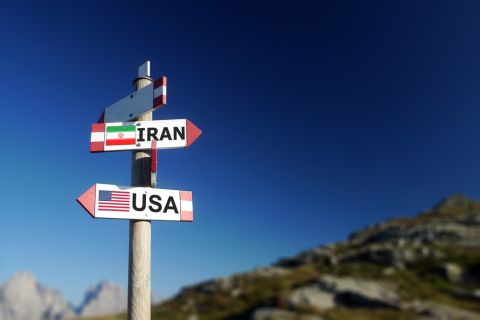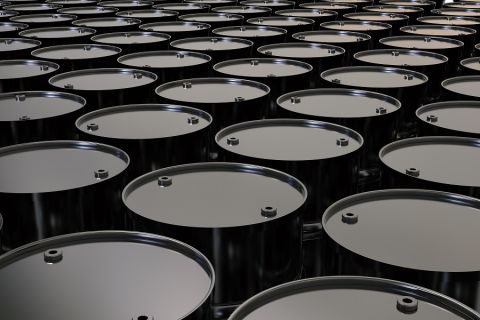Jennifer Pallanich, senior technology editor, Hart Energy: Hi, I'm Jennifer Pallanich. I'm here with John Durand of XRI Water, and we're here at SUPER DUG. I have questions for John.
So, how has midstream water handling evolved?
John Durand, president and chief sustainability officer, XRI Holdings: You know, Jennifer, first of all, thank you for having me. It's evolved very quickly, very systematically over the last eight to 10 years. And what's very interesting is there are a lot of parallels between the conventional midstream and what the water midstream has become. Having spent a lot of my career on the upstream, conventional, midstream, and now water midstream, I've seen that pattern evolve, which is very exciting and a lot of good lessons learned because one thing we've done with the water midstream, much like conventional midstream, when the operators who had all those functions underneath their umbrella, control was important. Making sure that the commodities got to market back in the day. And then all of a sudden you started seeing all these new midstream companies come about.
There was a lot of trust building, relationship building that took place in the last eight to 10 years in the water management business. Like I said, I was involved on the upstream side with water and then had the opportunity to join XRI, having been actually a customer of theirs. So I got to know them very well. Got to see the integrity in which we do business. Got to see the fact that we came into the basin as a company very focused on environmental stewardship. Because if you'll recall, before we saw the advent of horizontal drilling and the true shale revolution hit the Permian, there were vertical wells and not nearly as much water, but when that switched over, starting in, you know, 2015, 2016, that's when we started to see the vast amounts of produced water. And you know, of course now we're looking at upwards of 12 [million barrels per day], 13 million barrels a day between the Midland and Delaware basins. So to be able to handle that kind of water, I'm really proud that through those long term relationships, through building a lot of great large pipe, buried infrastructure, getting folks off of fresh water, getting trucks off the road in west Texas, has been very successful. And we, along with our pier water midstream companies, are extremely excited about what the future pretends.
JP: Well, so I usually like to save the question about the future for the very end, but you opened the door. So where do you see the future of water handling going?
JD: I see it continuing to evolve in a couple of different ways. I think from the standpoint there's still maybe 20% to 30% of water handling that's still done by operators. I see that percentage shrinking. I see more third-party companies like ourselves taking that over. But you don't do it unless you're doing it well. The other thing I mentioned, I spent a lot of time on the upstream and even the downstream side of the market when I was working for E&P companies. And you know, if you look at the map of just the state of Texas, you know, they often call it the spaghetti bowl map of the interstate pipelines and the intrastate pipelines. They're everywhere. And what's really exciting about that is we're doing, I think, a great job as an industry on the water side in building meaningful large diameter infrastructure that I hope ultimately interconnects with, you know, all of us as pure companies. And then taking the next step towards all of this produced water that we know disposal is not really the short and certainly not the long-term answer anymore. What we're looking at is beneficial reuse and opportunities to treat water to a standard to where either it can be discharged to the surface because it's in essentially a pure state, or, looking at emerging markets like green hydrogen where we can take large volumes of water under very long-term contracts and turn that into, really, a win-win, not only for the conventional energy space, but also for the transitional energy space in something such as green hydrogen.
JP: Nice. All right. Well, I look forward to seeing how all of that unfolds. I have a question for you. I understand that, you know, most of your background has been in the Permian, but you guys are now doing some work in Canada. Can you tell me about some of the parallels and some of the differences you're seeing in the two areas?
JD: Yes. you know, lots of parallels, again, where we kind of very early on stuck our flag in the Permian was to be focused on produced water treatment. And really not focusing on any one technology. Being very open—even though we own technology, we're not tied to it. We're not married to it long term. We're always looking for what the customer looks for and what they prefer. But then as they look to us as the expert to manage all this water, it becomes our responsibility. And we do take title to the water and then we shift it back and forth as we take away raw produced water. We're doing that in the Permian, we're now doing that in Canada in the same way. We're taking away produced water. We're giving it back in a treated state. And what’s even more compelling, and I think interesting, is that we're also looking at expanding our business into environmental remediation through treatment of water where that water resource can be preserved, but also returned to where it came from by getting the impurities out in any chemicals that exist. And so that's something that I see that was kind of our entree into Canada. And I see that growing not only there, but in other parts of the country as well as internationally.
JP: And that can be done economically now?
JD: It can, it can. And that's been one of the real drivers of why the water midstream business has taken off the way it has and been successful and gained the trust of the upstream operators because, you know, in our country, we always make the most responsible economic decisions. Now, what's great is we're making the best, most economical decisions, and they're great for the environment and they're very focused on—again, with the seismic issues, that's not good for any aspect of our industry. We want to see that disappear as best we can. That's why we've always been a company focused on disposal as a last resort, and now being focused on environmental remediation, where we're coming in and taking our water treatment technology to the next level and really into a new business line.
JP: Okay. Thank you so much for your time today.
JD: Thank you, Jennifer. It was a pleasure.
JP: And I'm Jennifer Pallanich with Hart Energy Live. Thanks for joining us.
Recommended Reading
Kissler: The Challenge for Oil is Falling Demand, Despite Heightened Middle East Conflicts
2024-02-09 - Even though demand is the bigger weight on traders’ minds right now, Red Sea attacks and the U.S.’ “shadow war” with Iran still have the potential to impact the global oil supply, and consequently, prices.
Oil Dips as Demand Outlook Remains Uncertain
2024-02-20 - Oil prices fell on Feb. 20 with an uncertain outlook for global demand knocking value off crude futures contracts.
Oil Settles at Highest in Nearly 8 Weeks on Strong Economic Growth
2024-01-26 - Oil prices settled at their highest in nearly two months on Jan. 26 as positive U.S. economic growth and signs of Chinese stimulus boosted demand expectations.
US Oil Stockpiles Surge as Prices Dip, Production Remains Elevated
2024-02-14 - EIA reported crude oil stocks increased by 12.8 MMbbl as February began, far outstripping expectations.
US Leads Global Oil Production for Sixth Straight Year-EIA
2024-03-11 - The Energy Information Administration says it is unlikely that the record will be broken by another country in the near term.



